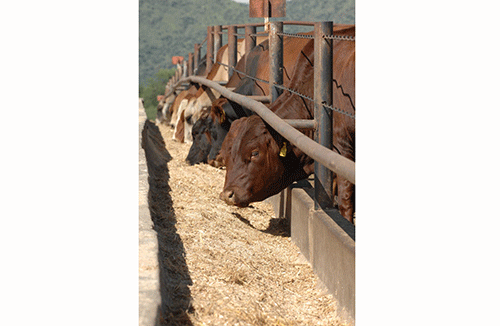Namibia, being an arid country, is often hit hard by drought. The result of continuous dry spells has resulted in low crop production, while hordes of livestock are lost every year due to a lack of grazing.
Experts have argued that the administration of timely and correct licks for livestock could mean the difference between life and death.
Although many farmers have realised the importance of licks for their livestock, commercial use is not yet common in communal areas, especially in areas north of the Veterinary Cordon Fence.
This may be attributed to the high cost of licks and the lack of transport.
In the Eastern communal areas of the Omaheke region, licks are used but not in an intended manner. The farmers normally provide too little lick for their animals. Thus, the animals do not benefit from it.
Namibia is an extensive livestock-producing country with relatively low and highly variable rainfall. The nutrient content and availability of the natural pastures fluctuate year to year and between the wet and dry seasons.
The wet season commences during November/December and continues until March/April, with January and February as the months with the highest precipitation.
The dry season stretches from May until the end of October. The most difficult period is August until October when the nutritional value of the natural grazing is at its lowest and the cows are in the final trimester of pregnancy.
Typical licks used in Namibia are winter, summer and production licks. Their use is advocated in all farming sectors, since the benefits have been proven over many years. Communal farmers are reluctant to use the licks as prescribed, due to the high costs. Advantages are only recognised later, but an immediate response is not always visible.
Licks are used only to supplement the most limiting nutrients. It is, thus, important to keep the animals on the pasture and not substitute it with licks.
Licks should directly supply minerals, protein and energy to the animal or improve digestibility, thus increasing energy and crude protein availability.
Summer lick (Green veld lick)
Large parts of Namibia are Phosphorus (P) deficient, especially the northern and eastern sandy areas. A P supplement is recommended during the active growing season of the veld (December-April). This coincides with the main growing period of cattle due to the availability of high-quality grazing.
Since P-excretion is an “energy-sapping” process, P-supplementation in winter is reduced or left out, so as not to supply an excess. P is supplied at six grams per animal per day and usually together with trace elements.
Winter lick
The primary aim of a winter lick is protein supplementation (mostly NPN), although P in sandy areas is included at a maintenance level. Such a supplement will provide an equivalent of 150 grams of crude protein per day to cattle.
Maize meal or hominy chop is used in the winter lick to cause a pH drop in the rumen for slower urea release. Intake is regulated with salt. The protein in the lick sustains the rumen micro-organisms and thus improves the pasture’s digestibility.
Production lick
This usually expensive product supplies the animals with energy in combination with protein and/or P and trace elements. It is offered to young animals being finished off for the market, or pregnant or lactating cows to help them maintain their body condition for re-conception. Intake typically varies between 1.5 to 2.5 kg per animal per day.
Most of the farmers in the Northern Communal Areas: Zambezi, Kavango East and Kavango West, Omusati, Oshikoto, Oshana and Ohangwena regions, cultivate Mahangu (Pearl Millet) fields. The crop residues from these fields are utilised by the animals, such as sheep, goats and cattle or left to be blown away.
- Additional reporting from Agriculture Today and other agricultural publications.


